Essential Trail Running Tips!
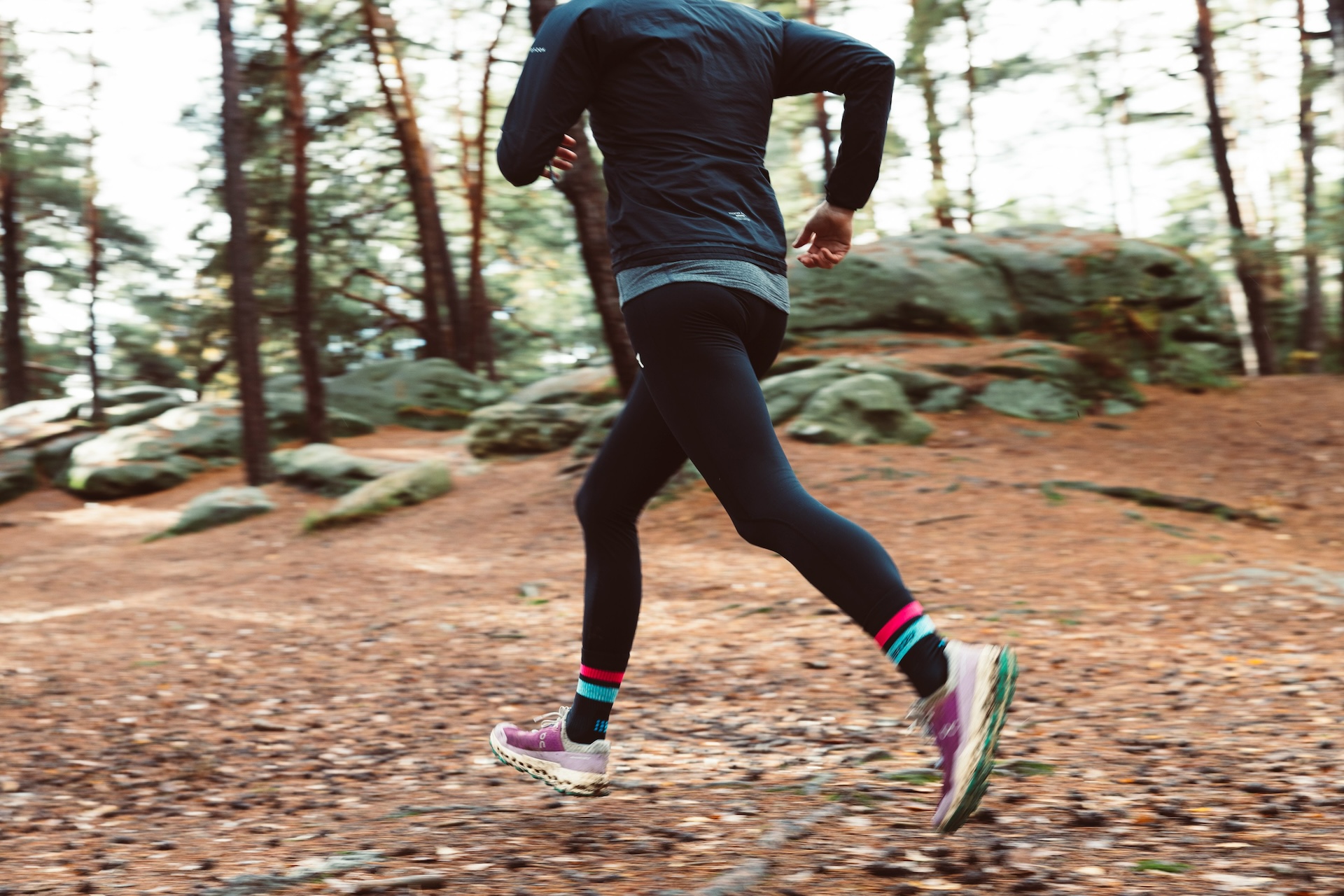
If you’re looking to hit the trails, and want to know how to add them into your running, then we’ve got some top tips from The Running Channel team.
Just because you want to go off-road, doesn’t mean you’ll be scaling Alpine ridges and pulling out trekking poles to help you on tricky terrain. Trail running covers everything from gravel paths, rolling forest singletrack and laps around a local park through to muddy fells, mountain scree and massive 14-ers (that’s 14,000ft of elevation, but save that to the experts!).
THE BENEFITS OF TRAIL RUNNING
- There’s been a lot of research into the psychological benefit to being in nature, and how it’s been shown to improve our mental and emotional health. Exercising out in nature – surrounded by trees, not tower blocks – increases that benefit with many runners finding that it transforms how they feel about running, and improves both their physical and mental health
- Hilly trails can help you build up a lot of strength as a runner, both in your fitness and lower leg muscles, but also in connective tissue, joint strength and stabilising muscles, especially around the ankles and knees, plus trails can be a little easier on the joints compared to road running
- Trails can be more engaging – or distracting – than road running, meaning you’re more aware of how you’re moving and where, without the boredom that can come from running up and down the same city streets
- You can walk whenever you want, you can eat snacks while you run, and you don’t need to think so much about pace when we’re on the trails – of course, these apply to all runs, but they are especially true on trails!
Here are our top trail running tips.
GET SOME TRAIL RUNNING SHOES
A good trail run begins with the right kit, so if you want to run more on trails then get yourself some decent trail running shoes which work specifically for the terrain you’re running on.
Compared to road shoes, trail running shoes have more support and protection in the upper, and more grip in the outsole. These are all important as you take on less stable terrain. The trail shoe you need will depend on where you’ll run.
If you only run on light trails, like a gravel path or wooded forest path that never gets too muddy, then road-to-trail shoes may be best for you, especially if you run some sections of road on the way to the trail.
If you run on more varied terrain with more hills then look for trail shoes with deeper lugs (that’s the outsole pattern) and a grippy outsole material (Vibram is a good choice).
Check out our guide to all the different types of trail running shoes, and our favourite choices.
JUST START, BUT DON’T RUSH
You’ll want to learn how to run on specific terrain, whether that’s gravel roads or muddy fells, so take your time to build up your mileage. Each terrain has its own challenges that you need to get familiar with, and as you do, you’ll become more confident and efficient.
Some simple tips to work on your form include running with a shorter stride and a quicker cadence, and pick your feet up to avoid catching your toes on uneven ground.
Trail runner builds up strength in lots of different areas (hello glutes and calf muscles!), and can make you a better runner overall, but to begin you may feel more aches as your body gets used to the hills and uneven terrain. Working on leg strength in the gym can help, as can improving your ankle strength and mobility.
DON’T WORRY ABOUT PACE ON THE TRAILS
With different ground conditions and more elevation, you’ll naturally run slower on trails than on the road, so don’t compare your road running times to trail running. But because of this, you might want to plan your runs to make sure you know how long or how far you want to run far.
RUN WITH THE RIGHT KIT
This one’s important. As trails have more challenging terrain they can come with a greater risk of injury, so it’s crucial that you carry some basic kit with you just in case you have any issues – or if you run into someone who needs help.
It’s good to run with a pack, and carry some essential items with you (we’ve covered your trail essentials here): a fully-charged phone, a small first aid kit (including toilet paper, just in case!), water and more calories than you plan to consume, a windproof or waterproof jacket, plus any weather-appropriate accessories like a hat, gloves and base layer (and headtorch if there’s any chance of it getting dark), or sunglasses and suntan lotion.
IF IN DOUBT, PUT IT IN YOUR PACK
If you’re not sure whether you need the extra gel or energy bar, pack it.
If you aren’t certain if you’ll need the headtorch, pack it.
If you don’t know if it’ll rain or be extra cold, pack the rain coat.
You get the idea. Be prepared for more than you expect to happen. Trail runs can take longer than planned, you might get lost, the weather may unexpectedly change, you may fall ill or run into someone who is injured. Be ready for all those things.
UNPLUG THE HEADPHONES
One of the great benefits of trail running is that you get to be outside, enjoying the views and the sounds of nature. Learn to unplug from a device and feel more connected to the world around you.
Running on trails feels different to running through towns, and a lot of runners find more mental health benefits to trail running compared to city runs – and those benefits can be felt the most when we aren’t plugged into a device.
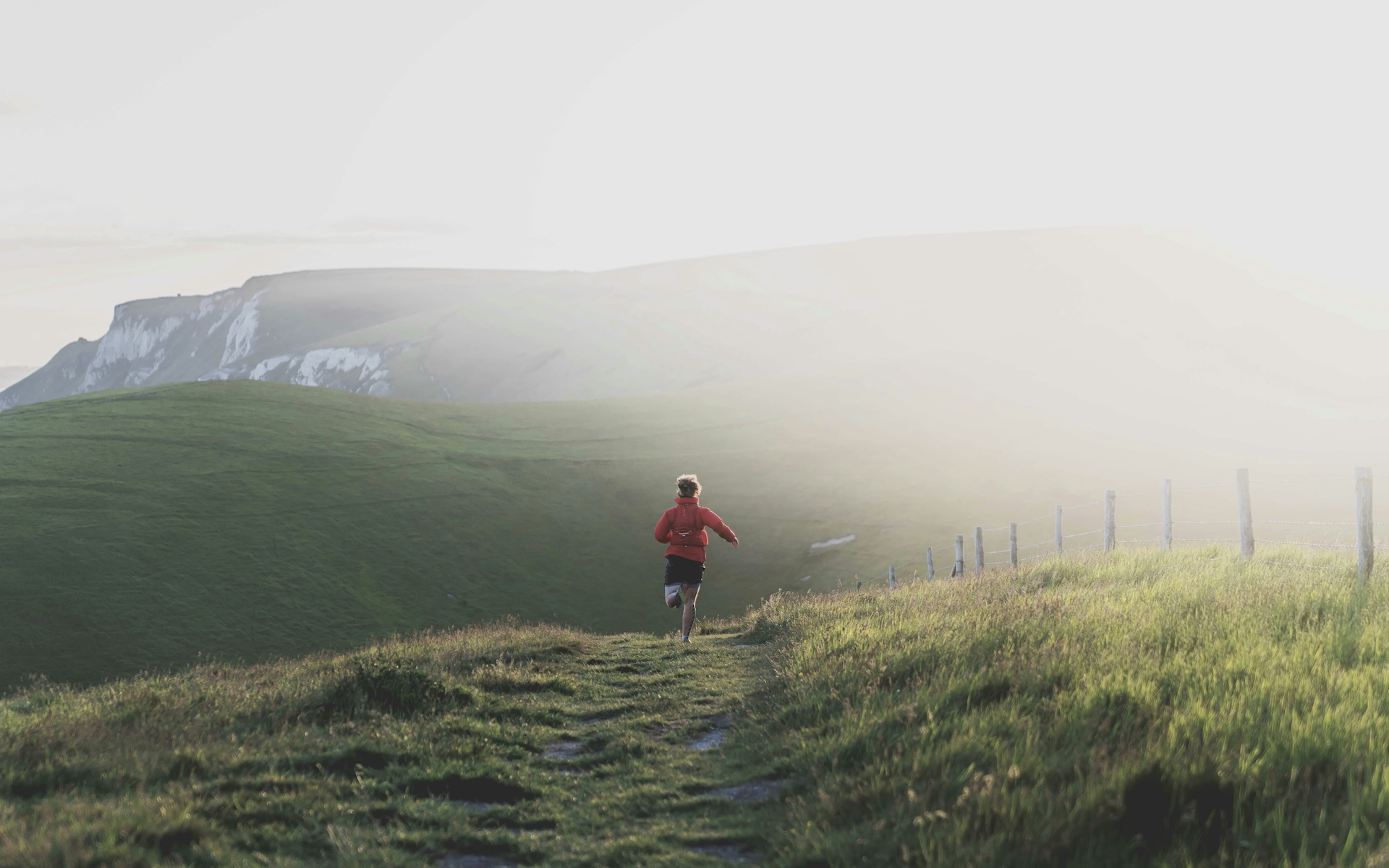
SAY HELLO TO PEOPLE
You might not say hello to every runner you pass on the street, but you probably will say hi or wave to everyone you pass on the trail. People are much friendlier when they’re out in nature compared to running through town!
And does anyone else find that saying hello to people while running makes them feel good and makes the run feel easier? Just another reason why trail running is more fun than road running!
WARN OTHER USERS YOU’RE APPROACHING
If there are walkers, hikers, slower runners and cyclists ahead of you and you want to pass, then call ahead with plenty of time to allow them to react. A simple ‘runner coming’ can be enough to get their attention, or if you’re feeling more shy then a cough should be enough.
Avoid speeding up on people and passing at the last minute as it can be alarming to them – they’re out enjoying a nice relaxing walk in the countryside and don’t want to be shocked by a speeding runner!
PLAN YOUR ROUTE IN ADVANCE (AND TELL SOMEONE WHERE YOU’RE GOING)
As you begin to run in new places, you want to make sure you’re going the right way and not wandering off-trail.
Use an app like Strava or Garmin Connect to plot out the route as these will show you heatmaps of the most common routes run in an area, meaning you know that certain paths are followed by other runners.
Ideally you’ll want to send the route file to your watch if you have a device that can do that. This will allow you to follow a route without getting lost, but saving it to your phone is also OK. And having a phone is really important in case you do get lost and need to open up a map to get back on the right trail.
As you become more familiar with routes, you’ll learn which ones are fine year-round, and which should be avoided in bad weather.
It’s also good to let someone know what route you’re planning to go and how long you expect it to take. Some devices also have an alert function which can detect if you’ve fallen and call your emergency contact for you – you should set this up if it makes you feel safer on the trails.
LEARN WHERE YOU CAN REFUEL
If you start doing longer runs – say if you’re training for a marathon or ultra – then it’s unlikely you’ll be able to carry everything you need to drink for a whole run, so work out a route which passes some shops or a nature park visitor centre where you can top up your bottles (and take some means of payment, just in case).
If doing that isn’t possible but you know you’ll pass a natural water source, then get some soft flasks with a water filter. To be extra cautious, you could take water purification tablets.
RUN THROUGH PUDDLES (AND OTHER TRAIL ETIQUETTE)
Part of trail running means looking out for the land, and for that we want to follow the existing paths and try not to go off-trail, so don’t cut switchbacks, and run through puddles rather than around them to avoid extending the trail width.
Other trail etiquette includes taking all your litter with you, closing all gates, being mindful of wild animals and other users of the trails and their experience, especially if you’re running fast.
YIELD TO FASTER USERS
Another general trail etiquette tip is to make way to faster users coming in the opposite direction. So walkers would yield to runners, but runners would yield to bikes. Everyone should slow to a walk and yield to horses.
Downhill runners will typically yield to uphill runners and cyclists, though an exception might be if a bike is bombing downhill towards you, and it’s going to be safer for you to step off the trail.
RUN WHEN YOU CAN, WALK WHEN YOU NEED TO
The hills can be hard work, so don’t try to run up them if they feel too steep – often you’ll get up them just as quickly by hiking or walking instead of running.
One top tip for the hills is to shorten your stride and increase your cadence. It’s really hard to run up a hill with a long, loping stride, but a short, quick stride can have you scaling those hills much more efficiently.
You should also walk or hike if the terrain becomes particularly challenging. That could be rocks, roots or mud, as each of them takes some getting used to in order to be confident to run over them.
As you run on more trails you’ll get stronger and soon you’ll be running all the uphills!
AND GO EASY ON THE DOWNHILLS
Sure, it’s nice to let gravity take over, but keep the descents controlled and take them easy as downhill running can be surprisingly hard, especially over uneven ground – and falling downhill hurts more than falling uphill!
The downhills can pound your quads, so gradually build up your strength by being consistent with trail runs.
BE EXTRA CAREFUL WHEN YOU’RE TIRED
As you get tired, you may drag your feet more or pay less attention to where you’re going, which can lead to more chances of trips.
Part of this tiredness could be from a lack of fuel, so always pack enough calories and hydration for your run as this can help you to focus better on the trails.
If you’re in a longer trail run or race, then consider caffeine as a way to help keep you alert (because caffeine might just be the ultimate performance enhancer for runners).
BE AWARE OF THE ANIMALS!
If you come into a field with animals, then learn the best way to approach and avoid them – of course, if you’re in an area with very dangerous animals, like bears, then be extra vigilant and prepared.
HOW TO POOP IN THE BUSHES
There aren’t many toilets in the forest or up mountains, and one thing all runners know is that sometimes you just have to go!
In theory, you should dig a small cathole for your poop, and bury that and any toilet paper you use, but that requires a certain level of organisation that most runners aren’t prepared for (a poop shovel isn’t in many kit lists for a trail run). Just try to be as conscientious of other nature users as possible. And learn which leaves are the most bottom-friendly…
SIGN UP TO A TRAIL RACE
If you’ve run road races but have never done a trail race, then they feel quite different.
Trail runs tend to be more relaxed, and you’ll probably spend more time chatting to people while you run. There’s a greater sense of camaraderie all the way through the pack, as you all deal with the hills and the ground conditions. Plis the aid stations in a trail run have much better choices than road water stations.
Sign up to a local trail race and see for yourself! Here are some of our favourite trail races in the UK, and some of the best UK ultramarathons if you want to run really far!
***
Do you have any other trail running tips to share?
Lead photo by Markus Spiske on Unsplash


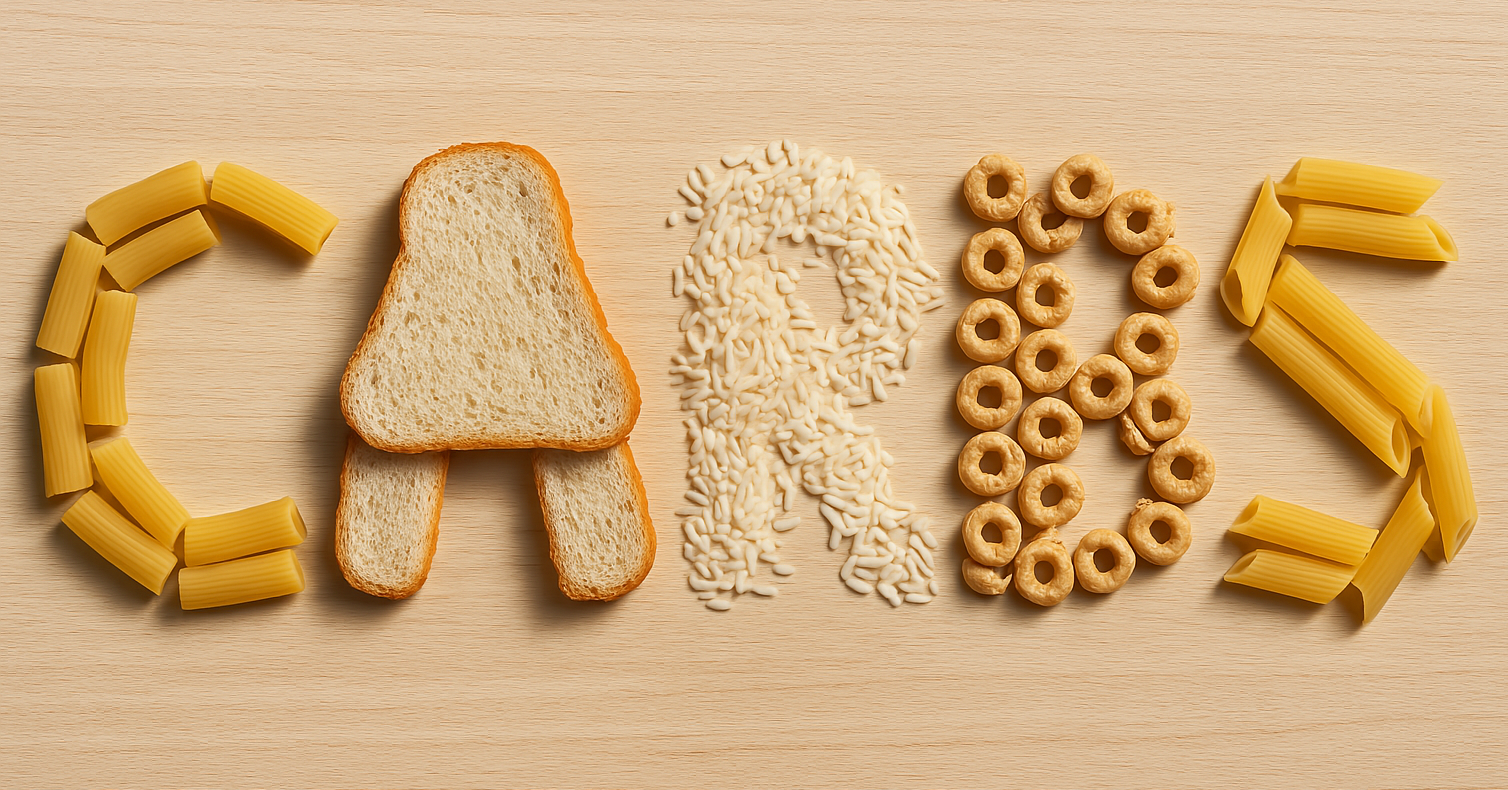

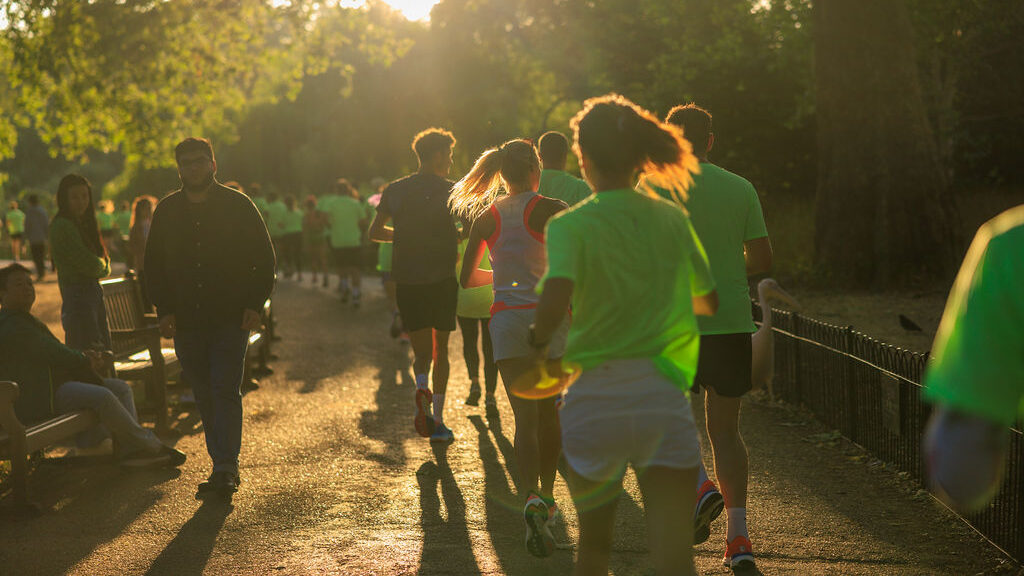
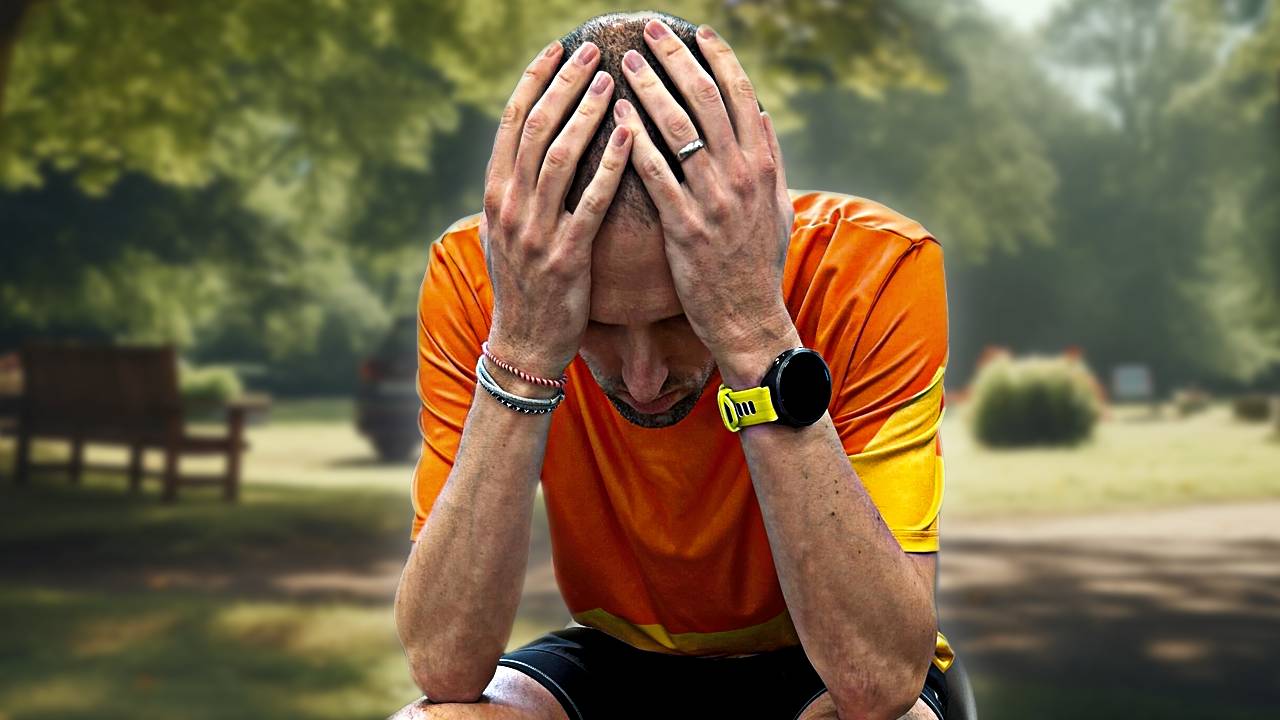






















Running News
Ingebrigtsen Stars at World Athletics Indoor Championships 2025 – Plus All The Winners!
Sam Ruthe Is First 15-Year-Old To Run A Four-Minute Mile!
Eliud Kipchoge Will Run The 2025 Sydney Marathon!